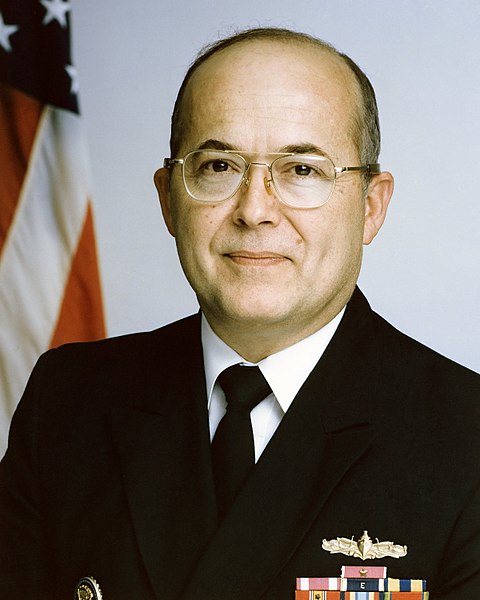Total Information Awareness
Total Information Awareness (TIA) was a mass detection program by the United States Information Awareness Office. It operated under this title from February to May 2003 before being renamed Terrorism Information Awareness.
Adm. John Poindexter, the director of the Information Awareness Office and chief supporter of TIA
Mass surveillance in the United States
The practice of mass surveillance in the United States dates back to wartime monitoring and censorship of international communications from, to, or which passed through the United States. After the First and Second World Wars, mass surveillance continued throughout the Cold War period, via programs such as the Black Chamber and Project SHAMROCK. The formation and growth of federal law-enforcement and intelligence agencies such as the FBI, CIA, and NSA institutionalized surveillance used to also silence political dissent, as evidenced by COINTELPRO projects which targeted various organizations and individuals. During the Civil Rights Movement era, many individuals put under surveillance orders were first labelled as integrationists, then deemed subversive, and sometimes suspected to be supportive of the communist model of the United States' rival at the time, the Soviet Union. Other targeted individuals and groups included Native American activists, African American and Chicano liberation movement activists, and anti-war protesters.

At the request of the U.S. Army, those who protested against the Vietnam War were put on the NSA's "watch list".
From 1940 until his death in 1966, the American business magnate Walt Disney served as a "S.A.C. Contact" (trusted informant) for the U.S. government to weed out communists and dissidents from the entertainment industry, according to documents obtained by The New York Times. See also: Hollywood blacklist
The September 11 attacks on the World Trade Center and the Pentagon led to major reforms of U.S. intelligence agencies, and paved the way for the establishment of the Director of National Intelligence position.
On 1 January 2006, days after The New York Times wrote that "Bush Lets U.S. Spy on Callers Without Courts, the President emphasized that "This is a limited program designed to prevent attacks on the United States of America. And I repeat, limited."





